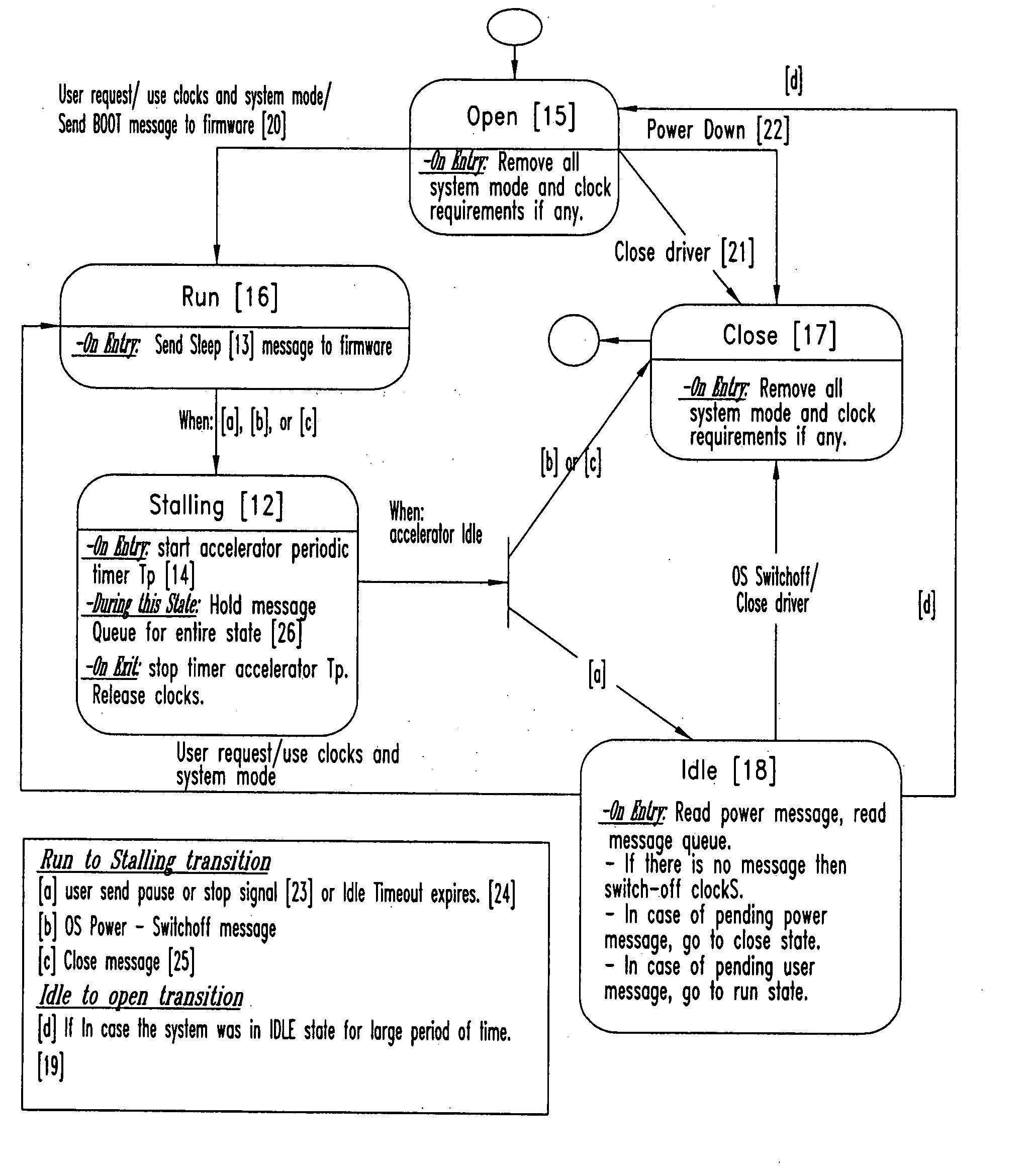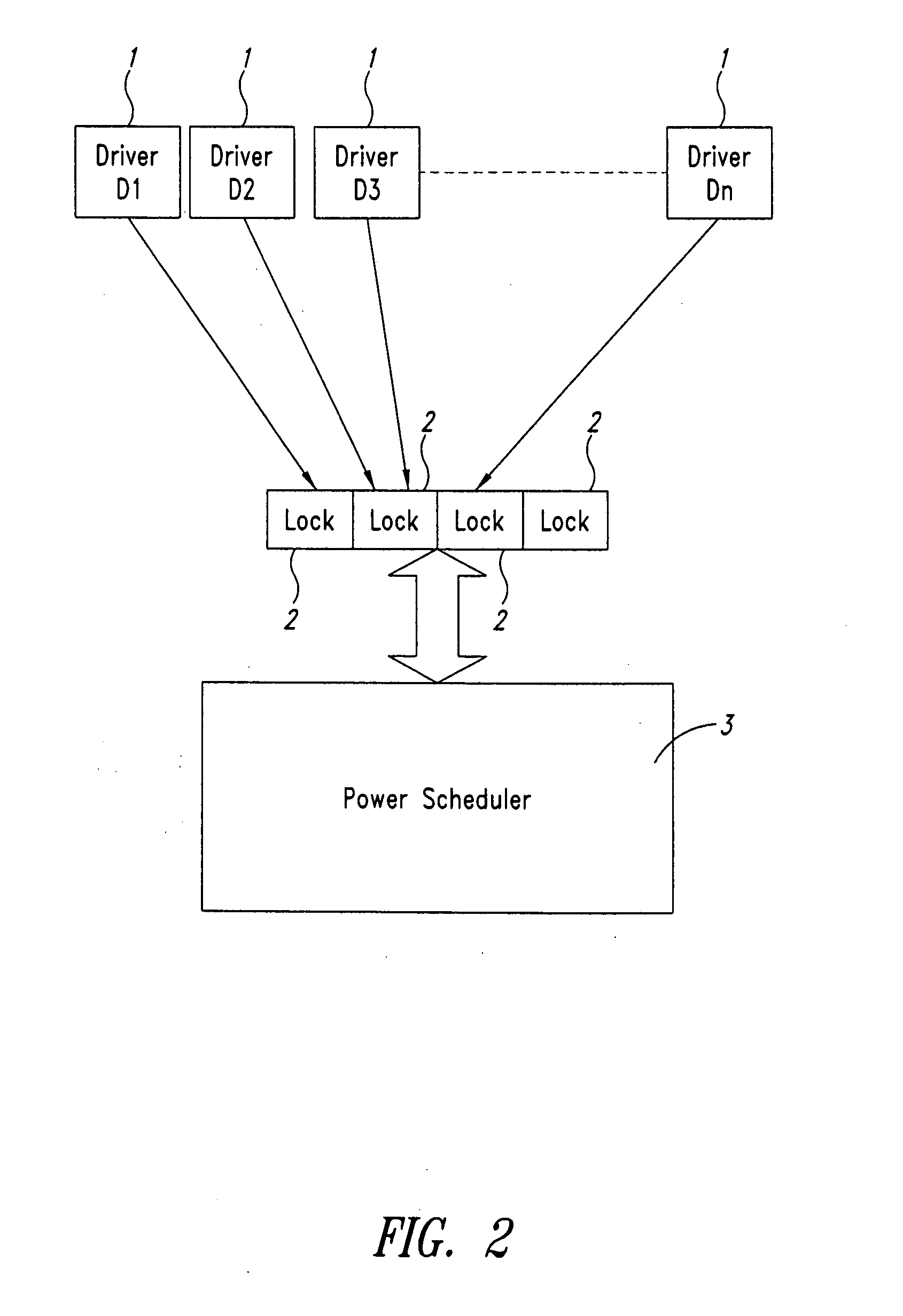Dynamic power management in system on chips (SOC)
a technology of dynamic power management and chips, applied in the field of dynamic power management systems, can solve the problems of low power consumption characteristics, inability to enter all the time, and the battery technology has not advanced as fast, so as to reduce power related communication, increase the time spent in low power mode, and effective dynamic power management
- Summary
- Abstract
- Description
- Claims
- Application Information
AI Technical Summary
Benefits of technology
Problems solved by technology
Method used
Image
Examples
Embodiment Construction
[0047] In a loosely coupled multi-processor system on chip, like Nomadik, where the various processors and peripherals share the same frequency and voltage source, the system can go in low power mode only and only when all the components are willing to go. In such systems generally the frequency and voltage is controlled by the central processor. The most obvious way of ensuring inactivity is to query each and every component about their willingness. However, this approach is costly both in terms of activity and time duration.
[0048] One embodiment of the invention herein proposes a system for effective power management in such systems.
[0049] One embodiment of the invention proposes a framework for expediting the whole process of going in low power state by maintaining feasibility locks. Another embodiment of the invention also proposes a stalling machine in case of a task specific processor like DSPs (Digital Signal Processor) to ensure the safe transition of the system to move in...
PUM
 Login to View More
Login to View More Abstract
Description
Claims
Application Information
 Login to View More
Login to View More - R&D
- Intellectual Property
- Life Sciences
- Materials
- Tech Scout
- Unparalleled Data Quality
- Higher Quality Content
- 60% Fewer Hallucinations
Browse by: Latest US Patents, China's latest patents, Technical Efficacy Thesaurus, Application Domain, Technology Topic, Popular Technical Reports.
© 2025 PatSnap. All rights reserved.Legal|Privacy policy|Modern Slavery Act Transparency Statement|Sitemap|About US| Contact US: help@patsnap.com



